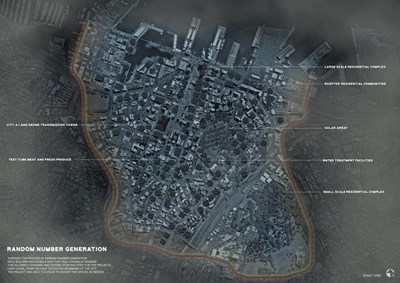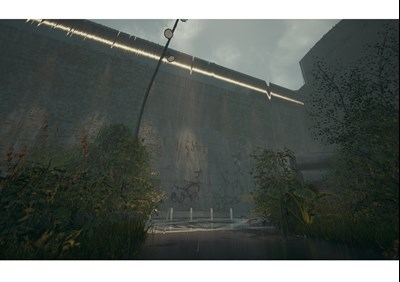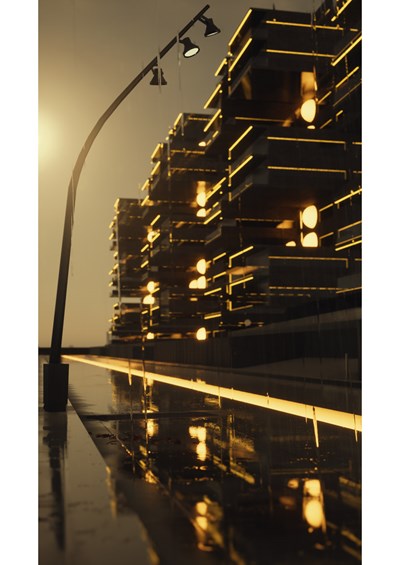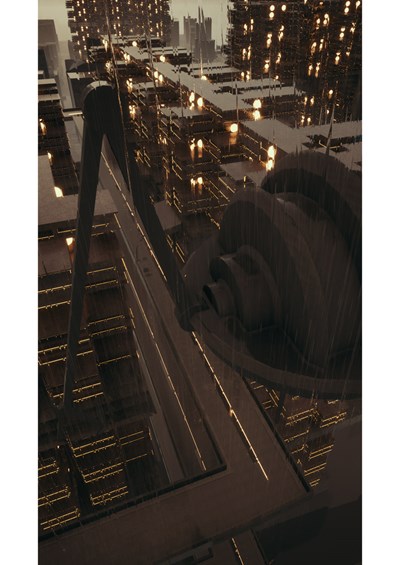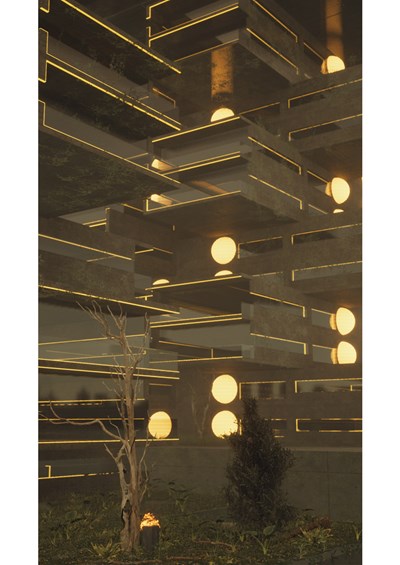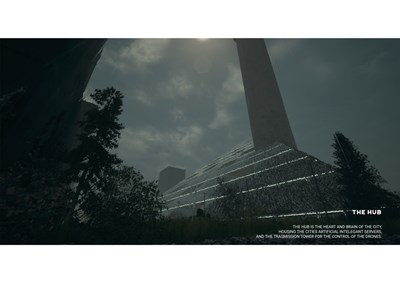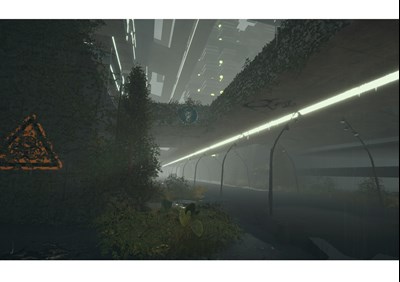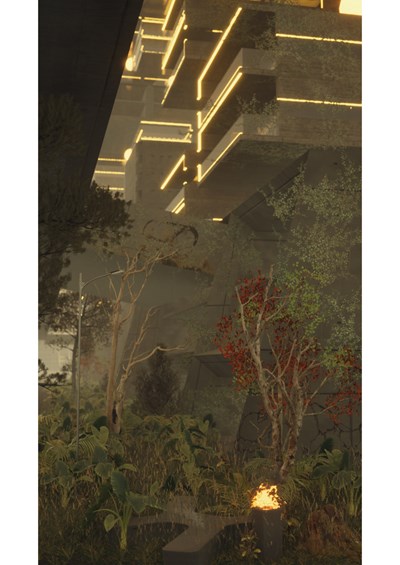Alex Helg from Te Whare Wānanga o Wairaka, Unitec, School of Architecture was a finalist in the Te Kāhui Whaihanga Resene 2020 Student Design Awards for his project 'Auckland 2070'.
Project description
Coronavirus (COVID-19) caught the world off-guard in 2020. These unprecedented times provoke ideas of dystopian futures characterised by isolation, social distancing, social unrest, protests and rioting. The effects of lockdown and fundamental changes to how we work have occurred amid high-profile instances of violent and anti-social behaviour.
The setting is Auckland 50 years from now - 2070; the narrative is that Auckland is one of the last cities successfully fighting the virus. The city is walled off from the rest of the country, and it houses the remaining few able to resist the virus and produce a cure. As speculated, autonomy is a significant part of the way the city functions. Due to the epidemic ruleset of social distancing and contact tracing, unmanned workforces are crucial to distancing and isolation and temperature-scanning drones, autonomous Ubers, robotic manufacturing teams and 3D-printed buildings are all commonplace in this speculated future.
The project intends to pose a drastically different future, not for the purpose of predicting what will happen, but to exercise our minds towards solving design challenges that are not apparent today but could prove vital to our survival in the future.
Judges' citation
In this speculative project, Alex looked at a dystopian future as a way to provoke thought on how we live and work. By envisioning a future city crippled by a pandemic, Alex created a series of constraints within which he became forced to work, reflecting on the impact of this on the buildings, city and the lives of the occupants. While some of the ideas may have been bleak, such as the use of a credit system to create a social hierarchy that is embedded in the architectural fabric, they allowed for reflection on the less explicit but still prevalent ways in which these ideas are present in our current lives. The scheme was notable in its use of atmospheric spaces, lighting and materials to create a vision of a possible, albeit dark, future of Auckland. The key intervention, a series of residential towers, were striking in their use of artificial lighting and cantilevered balconies.





